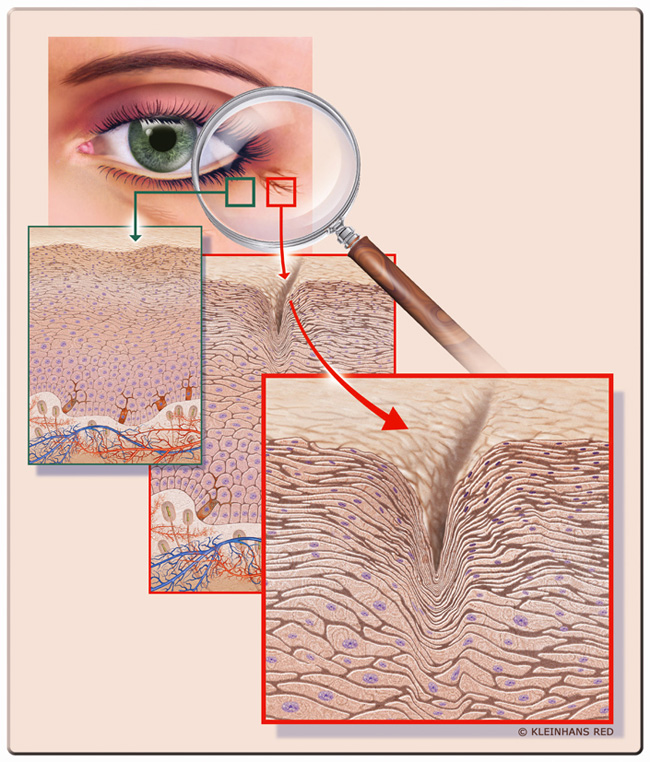The formation of lines and wrinkles

Lines and wrinkles are changes in the skin which are visible with the naked eye. They consist of retractions of the upper skin layers, which are limited by a bulge in a linear way. The formation of wrinkles throughout the body and face are a well-known sign of skin aging. In general, facial wrinkles appear on both sides of the face. They are symmetrical.
Two main forms of wrinkles are distinguishable: permanent and temporary wrinkles. As for permanent wrinkles, wrinkles related to facial expression and wrinkles which are linked with gravity are to be diffentiated.
Wrinkles of facial expression are a result of the repeated tractive force of all facial muscles so that the skin gradually loses its tone in predestined areas. Wrinkles of expression occur in the regions around the eyes, nose, mouth and cheeks.
Wrinkles on flaccid skin develop with growing age. In this context, there is a decrease of subcutaneous fat cells depots. Gravity exerts its effects on sagging skin, especially in the area of the cheeks and the throat.
Temporary wrinkles are fine, less deep and disappear when stretched. In dependence of skin aging and localization they may more or less quickly develop into permanent wrinkles.
All types of wrinkles and lines are a main topic in dermocosmetics. They are influenced by numerous intrinsic factors such age, gender, genetic disposition, race, and - in exposed zones - by extrinsic factors such as UV light, nutrition, tobacco and alcohol abuse. Naturally, the formation of wrinkles may be influenced by appropriate skin care measures.
An example of the formation of lines and wrinkles in particularly exposed skin zones are ocular wrinkles, so-called crowsfeet. In our illustration the skin around the eye marked by fine lines and wrinkles in the right box is contrasted with smooth skin in the left box. In the enlargement, the retraction of the upper skin layers becomes obvious.
Source: C. Jeanmaire, J.-L. Contet-Audonneau, G. Pauly, Les rides : quelle origine ? bedc, Vol. 9, No. 7, 218-221.
